Chandon Blanc de Noirs (375ML half-bottle)

Product Details
Your Rating
Somm Note
Winemaker Notes










CHANDON is a global community of winemakers, rooted in a domain on which the sun never sets.
They have been crafting exceptional sparkling wines since our founding in 1959 in Mendoza, Argentina. In 60 years of excellence, the pioneering spirit that’s embedded in their DNA has taken them all over the globe to California, Brazil, Australia, China, and India.
CHANDON is now made up of six personalities under one identity, all making outstanding quality wines, united by their shared personality and values. The mission has always been to open a world of possibilities in sparkling wine. It is as relevant today as it was six decades ago.
In the late 1950s, Robert-Jean de Vogüé, a maverick and non-conformist, had the vision, courage, and stamina to redefine luxury sparkling wine. He was convinced that the road less traveled led to an exciting future for quality sparkling wine, so he set off on an epic journey to find unexpected new lands in Argentina. What he found there, in Mendoza–a high-altitude semi-desert in the Andean foothills – was the perfect terroir for pure, expressive, fruit-driven world-class fizz.
He decided his hunch – export the savoir-faire, not the bottles – was right.
And so, it began in 1959, when Maison CHANDON was founded on the tradition of innovation.
CHANDON Argentina, born of Robert-Jean de Vogüé’s original vision, broke ground in 1959 in Mendoza in the Andean foothills. From there, a world of unique sparkling wines opened up.
Napa, California was the next territory to beckon, after Robert-Jean became convinced of the potential of this region for quality sparkling. The idea was considered revolutionary both in France and in America. The United States had always been a minor market for wines and US demand for California sparkling wines even smaller.
CHANDON California was founded in 1973, betting the emergence of a sparkling-wine maker, and began producing under the direction of Dawnine Dyer in terroirs identified by John Wright.
That same year, 1973, Brazil’s Serra Gaúcha was pinpointed. Then in 1986, Yarra Vally was found for CHANDON Australia, and legendary winemaker Tony Jordan was tasked with producing there. CHANDON China arrived on the scene in 2013, in Ningxia, China, the country’s top premium winemaking region. The most recent member of the family is CHANDON India, founded in 2014, in Nashik, Maharashtra.

What are the different types of sparkling rosé wine?
Rosé sparkling wines like Champagne, Prosecco, Cava, and others make a fun and festive alternative to regular bubbles—but don’t snub these as not as important as their clear counterparts. Rosé Champagnes (i.e., those coming from the Champagne region of France) are made in the same basic way as regular Champagne, from the same grapes and the same region. Most other regions where sparkling wine is produced, and where red grape varieties also grow, also make a rosé version.
How is sparkling rosé wine made?
There are two main methods to make rosé sparkling wine. Typically, either white wine is blended with red wine to make a rosé base wine, or only red grapes are used but spend a short period of time on their skins (maceration) to make rosé colored juice before pressing and fermentation. In either case the base wine goes through a second fermentation (the one that makes the bubbles) through any of the various sparkling wine making methods.
What gives rosé Champagne and sparkling wine their color and bubbles?
The bubbles in sparkling wine are formed when the base wine undergoes a secondary fermentation, which traps carbon dioxide inside the bottle or fermentation vessel. During this stage, the yeast cells can absorb some of the wine’s color but for the most part, the pink hue remains.
How do you serve rosé sparkling wine?
Treat rosé sparkling wine as you would treat any Champagne, Prosecco, Cava, and other sparkling wine of comparable quality. For storing in any long-term sense, these should be kept at cellar temperature, about 55F. For serving, cool to about 40F to 50F. As for drinking, the best glasses have a stem and a flute or tulip shape to allow the bead (bubbles) and beautiful rosé hue to show.
How long do rosé Champagne and sparkling wine last?
Most rosé versions of Prosecco, Champagne, Cava or others around the “$20 and under” price point are intended for early consumption. Those made using the traditional method with extended cellar time before release (e.g., Champagne or Crémant) can typically improve with age. If you are unsure, definitely consult a wine professional for guidance.

Known for elegant wines that combine power and finesse, Carneros is set in the rolling hills that straddle the southernmost parts of both Sonoma and Napa counties. The cooling winds from the abutting San Pablo Bay, combined with lots of midday California sunshine, create an ideal environment for producing wines with a perfect balance of crisp acidity and well-ripened fruit.
This cooler pocket of California lends itself to growing Pinot Noir, Chardonnay and Syrah. Carneros is an important source of sparkling wines made in the style of Champagne as well.
